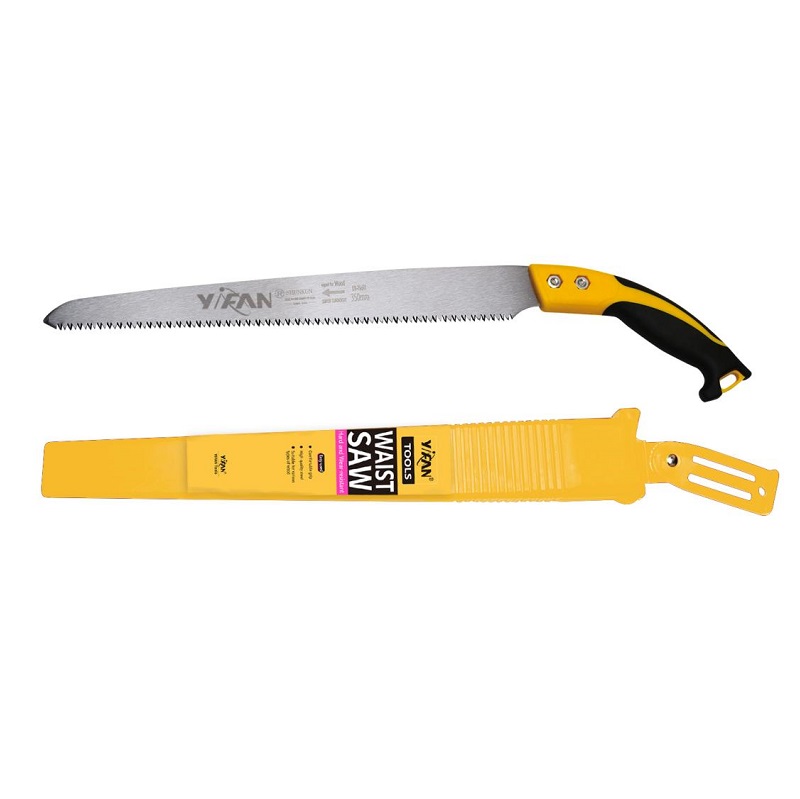The manganese steel waist saw is a powerful and versatile tool for tackling various cutting tasks. This guide will delve into its functionalities, proper usage techniques, and maintenance tips, empowering you to utilize your waist saw with confidence and efficiency.
Unveiling the Advantages of Manganese Steel
The waist saw boasts a high-quality manganese steel construction, offering several advantages:
Exceptional Hardness: The steel's high hardness ensures the saw teeth remain sharp for extended periods, delivering consistent cutting performance.
Superior Wear Resistance: The material's resistance to wear and tear translates to a longer saw lifespan, minimizing replacements.
Efficient Cutting: The combination of hardness and wear resistance allows the saw teeth to effortlessly penetrate diverse materials, from soft wood to tougher branches.
Optimizing Your Cutting Experience
The waist saw's design prioritizes user comfort and efficient operation:
Ergonomic Handle: The handle conforms to the natural curve of the human hand, minimizing fatigue during prolonged use.
Patented Sawtooth Design: The unique sawtooth configuration facilitates swift chip removal and prevents jamming, guaranteeing a smooth and hassle-free cutting experience.
Adjustable Angle Design: The saw boasts an adjustable angle mechanism, enabling you to adapt the cutting approach to various angles, ensuring clean cuts regardless of the material's orientation.

Essential Pre-Use Considerations
Before embarking on your cutting project, ensure the following:
Sharp Saw Teeth: Verify that the saw teeth are sharp for optimal cutting performance. A blunt saw will require extra effort and may result in uneven cuts.
Secure Blade Connection: Double-check the connection between the saw blade and the handle to ensure it's firm and secure. A loose connection could compromise control and safety.
Flat and Untwisted Blade: Inspect the saw blade for any bends or twists. A warped blade can hinder cutting efficiency and potentially break.
Proper Blade Tension: The saw blade's tension is crucial. An excessively loose blade can break, while an overly tight one can make sawing difficult. Use your hand to feel the blade's tension for optimal adjustment.
Mastering the Cutting Technique
Here's a breakdown of the proper cutting technique for your manganese steel waist saw:
Body Position: Stand with your body tilted slightly forward at a 45-degree angle. Take a small half step forward with your left foot, shifting your center of gravity to your right foot. Both feet should be comfortably positioned, and your line of sight should be aligned with the cutting line on the workpiece.
Grip and Control: Hold the saw handle firmly with your right hand. For some models, your left hand might be used to gently support the front end of the saw bow for added stability.
Saw Movement: Apply light pressure while pushing the saw forward. The left hand plays a supporting role during the pushing motion. Relax your grip while pulling the saw back for a smooth return stroke.
Post-Use Maintenance: After completing your cutting task, remember to clean the saw teeth and wipe them dry to prevent rust. Apply a light coat of oil to maintain the saw's functionality and longevity.
Safe Storage: When not in use, store your waist saw in a designated tool rack or toolbox to keep it organized and readily accessible.
By following these guidelines, you can effectively utilize your manganese steel waist saw for various cutting projects. Remember, prioritizing safety and proper technique will ensure a productive and enjoyable cutting experience.
Post time: 07-05-2024




